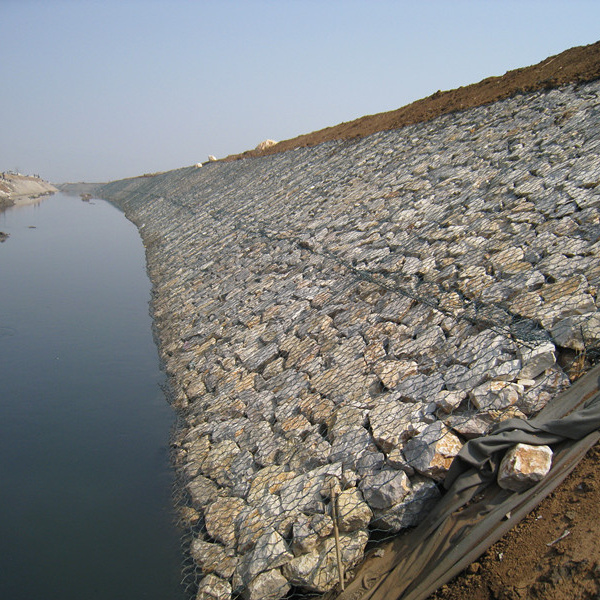ធ្នូ . 21, 2024 15:50 Back to list
Choosing the Right Sizes for Gabion Boxes to Fit Your Project Needs
Understanding Gabion Box Sizes A Comprehensive Guide
Gabion boxes are versatile structures made from wire mesh and filled with a variety of materials, such as rocks, soil, or concrete. They are widely used in landscaping, erosion control, and civil engineering applications thanks to their durability and aesthetic appeal. One of the most important aspects to consider when using gabion boxes is their size. This article delves into the different sizes of gabion boxes, their applications, and the factors that influence the choice of size.
What are Gabion Boxes?
Gabion boxes are essentially cages or containers made of wire mesh, typically configured into rectangular shapes. They can be stacked or placed side by side to create walls, barriers, or decorative features in outdoor spaces. The fill material used inside the gabion boxes can be sourced locally, which makes them an environmentally friendly choice. Depending on the project needs, gabions can be filled with river rock, crushed stone, or even natural vegetation for a greener look.
Popular Gabion Box Sizes
Gabion box sizes can vary significantly, depending on their intended use. The most common dimensions include
- 2 ft x 2 ft x 2 ft (0.6m x 0.6m x 0.6m) These small boxes are typically used in landscaping projects where minor elevation changes or decorative elements are needed. They are easy to handle and integrate seamlessly into small garden spaces.
- 3 ft x 3 ft x 3 ft (0.9m x 0.9m x 0.9m) This size offers a balance between volume and manageability, making them suitable for residential applications such as garden borders and decorative walls.
- 4 ft x 4 ft x 4 ft (1.2m x 1.2m x 1.2m) These mid-sized gabion boxes can be used for more substantial landscaping features and provide greater structural integrity for larger installations like retaining walls.
- 6 ft x 3 ft x 3 ft (1.8m x 0.9m x 0.9m) Often used for erosion control along waterways, these elongated boxes can form sturdy barriers and reduce soil movement while allowing water to flow through.
gabion box sizes

- 8 ft x 2 ft x 2 ft (2.4m x 0.6m x 0.6m) This larger format is ideal for commercial projects, including road and bridge applications, where significant weight and pressure loads must be managed.
Factors Influencing Size Selection
When selecting the size of gabion boxes for a specific project, several factors should be taken into consideration
1. Purpose The intended use of the gabion boxes largely influences their size. For small landscaping features, smaller boxes may suffice, while larger-scale erosion control or retaining walls may require bigger boxes.
2. Available Space The physical dimensions of the area in which the gabion boxes will be installed must be evaluated. Tight spaces may limit the size options.
3. Load Requirements Consideration must also be given to the loads that the gabion boxes will bear. Larger boxes can hold more material and therefore can handle higher loads more effectively.
4. Aesthetic Preferences The visual integration of gabion boxes into the landscape is also important. Larger boxes may create a more imposing look, while smaller boxes could add subtle decorative elements.
5. Budget Lastly, budget constraints can dictate which sizes are feasible, as larger boxes may incur higher material costs.
Conclusion
In conclusion, gabion boxes are a practical and aesthetically pleasing choice for various construction and landscaping projects. Their sizes range from small decorative units to large structural elements, each suited for specific applications. By understanding the different sizes available and considering the key factors influencing their selection, you can make informed decisions that align with your project goals. Whether you're planning to control erosion, build a retaining wall, or enhance your garden, gabion boxes provide a robust solution that stands the test of time.
-
HESCO Gabion Baskets for Coastal Erosion Prevention
NewsAug.22,2025
-
Longevity and Durability of River Rock Gabion Walls
NewsAug.22,2025
-
How to Integrate Gabion 3D Walls in Urban Planning
NewsAug.22,2025
-
Reno Mattress Gabion Applications in Civil Engineering
NewsAug.22,2025
-
How to Install Wire Mesh for Gabion Baskets Properly
NewsAug.22,2025
-
Best Materials for Filling a Chain Link Gabion
NewsAug.22,2025
-
Wire Mesh Thickness Impact on Gabion Wall Load Bearing
NewsAug.12,2025






